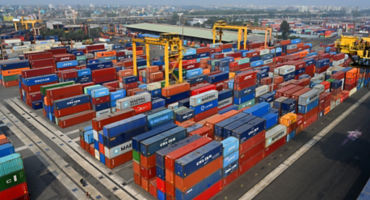- Equity Portfolio Manager
Skip to main content
- Funds
- Capabilities
- Insights
- About Us
Asset classes
The views expressed are those of the author at the time of writing. Other teams may hold different views and make different investment decisions. The value of your investment may become worth more or less than at the time of original investment. While any third-party data used is considered reliable, its accuracy is not guaranteed.
China’s new antitrust, data privacy and cybersecurity regulations, combined with its education and real estate industry reforms, the continued impact of COVID-19 and rising geopolitical tensions, drove a tumultuous investment environment last year. The country’s numerous headline-grabbing changes spurred global concern given the philosophical shift towards “Common Prosperity” and the sheer scale and speed of policymaking.
Looking ahead, we seek to interpret the events of 2021 in context. Regulatory shifts are not new in China, and, with the benefit of hindsight, there are clear reasons so many changes came so quickly. Critically, several structural drivers have helped the country’s equity markets globalise and appreciate during the past decade despite multiple periods of significant regulatory change. We believe those drivers will endure going forward.
In this piece, we address a common set of questions from clients following last year’s events, offering our perspective on the balance of risks and opportunities we see in Chinese public equity markets.
After the first half of 2021 brought an apparent inflection in the global pandemic and strong economic data, Chinese policymakers seemingly seized a brief window of opportunity to make their marks ahead of the 2022 National People’s Congress. The resulting barrage of new policies came as China’s GDP growth is structurally decelerating and transforming. Investment-led infrastructure and manufacturing growth is slowing while innovation, localisation and evolving consumption increasingly power the economy. This environment of slowing growth added to the pressure on leaders to address social issues such as the burden of after-school tutoring costs and income inequality.
China’s key areas of recent change and potential future investment risk are complex and multifaceted, creating significant associated uncertainty. Below, we offer a glimpse into how we put these issues into perspective as well as how we frame our base case looking ahead. We’ve provided links to more robust perspectives on many of these topics at the end of this article.
In our view, Chinese equities currently offer reasonable valuations, the likelihood of domestic policy support and the potential for lower correlations with other global risk assets. They have underperformed most other regions including the US, Europe and India since the start of the pandemic. Today, we believe Chinese equity market multiples appear reasonable relative to their own history while discounts to other key markets, such as the US, are near historical highs.
Importantly, unlike the developed world, the Chinese economy needed little stimulus in 2020 or 2021 amid the pandemic. In fact, the Chinese central bank’s balance sheet has been shrinking while the Fed’s expanded. It is now smaller as a percentage of GDP relative to that of its US peer. After emphasising reform in 2021, we expect the Chinese government to be both willing and able to support the economy this year. Notably, China faces less inflation pressure than the West and recently cut rates with room to move further. Taken together, we believe China’s economic cycle may exhibit limited correlation to that of the US and EU in the coming years.
Within this environment, we see several enduring areas of investment opportunity. Crucially, we do not believe that slowing GDP growth diminishes the return potential of Chinese equities. As US equities have demonstrated over the last decade, dramatic headline growth is not required for large economies to generate attractive equity returns.
China has one of the world’s largest and most dynamic economies. Regulatory shifts are part of industry development globally and are understood and expected within China. Looking ahead, we believe innovation, localisation and evolving consumption all generate exciting investment potential. The Chinese equity market — encompassing domestically listed A-shares, Hong Kong listed shares, US listed and traded companies and ADRs and other instruments — offers investors a broad set of potential investments. Not only is the opportunity set large and diverse, but retail participation in equity markets remains high, supporting abundant liquidity. We believe this environment creates an enormous opportunity for skilled institutional active management.
1Source: OECD, UNESCO, World Bank, Euromonitor, Ministry of Education of PRC, National Center for Education Statistics, Wind, UBS-S estimate


China’s changing: Why you should be watching
Continue readingURL References
Related Insights

China’s changing: Why you should be watching
Macro Strategist Johnny Yu discusses structural shifts in China impacting global investment dynamics. notably diminished importance of the property sector and collapse of imports.

10 reasons why China could be the next rerating story
Portfolio Manager Bo Meunier, Investment Director Irmak Surenkok and Investment Specialist Gilbert Chen set out 10 reasons why China could be the next rerating story to watch.

How China can offset the tariff shock
Macro Strategist Johnny Yu details the approaches Beijing could take to offset the tariff shock, from fiscal strategies to potential retaliatory measures to concessions that Washington may welcome.

URL References
Related Insights
Past results are not necessarily indicative of future results and an investment can lose value. Funds returns are shown net of fees. Source: Wellington Management
© 2025 Morningstar, Inc. All Rights Reserved. The information contained herein: (1) is proprietary to Morningstar; (2) may not be copied or distributed; and (3) is not warranted to be accurate, complete or timely. Neither Morningstar nor its content providers are responsible for any damages or losses arising from any use of this information. The Overall Morningstar Rating for a fund is derived from a weighted average of the three, five, and ten year (if applicable) ratings, based on risk-adjusted return. Past performance is no guarantee of future results.
The content within this page is issued by Wellington Management Singapore Pte Ltd (UEN: 201415544E) (WMS). This advertisement or publication has not been reviewed by the Monetary Authority of Singapore. Information contained on this website is provided for information purposes and does not constitute financial advice or recommendation in any security including but not limited to, share in the funds and is prepared without regard to the specific objectives, financial situation or needs of any particular person.
Investment in the funds described on this website carries a substantial degree of risk and places an investor’s capital at risk. The price and value of investments is not guaranteed. The value of the shares of the funds and the income accruing to them, if any, and may fall or rise. An investor may not get back the original amount invested and an investor may lose all of their investment. Investment in the funds described on this website is not suitable for all investors. Investors should read the prospectus and the Product Highlights Sheet of the respective fund and seek financial advice before deciding whether to purchase shares in any fund. Past performance or any economic trends or forecast, are not necessarily indicative of future performance. Some of the funds described on this website may use or invest in financial derivative instruments for portfolio management and hedging purposes. Investments in the funds are subject to investment risks, including the possible loss of the principal amount invested. None of the funds listed on this website guarantees distributions and distributions may fluctuate and may be paid out of capital. Past distributions are not necessarily indicative of future trends, which may be lower. Please note that payment of distributions out of capital effectively amounts to a return or withdrawal of the principal amount invested or of net capital gains attributable to that principal amount. Actual distribution of income, net capital gains and/or capital will be at the manager’s absolute discretion. Payments on dividends may result in a reduction of NAV per share of the funds. The preceding paragraph is only applicable if the fund intends to pay dividends/ distributions. Performance with preliminary charge (sales charge) is calculated on a NAV to NAV basis, net of 5% preliminary charge (initial sales charge). Unless stated otherwise data is as at previous month end.
Subscriptions may only be made on the basis of the latest prospectus and Product Highlights Sheet, and they can be obtained from WMS or fund distributors upon request.
This material may not be reproduced or distributed, in whole or in part, without the express written consent of Wellington Management.
10 reasons why China could be the next rerating story
Continue readingMultiple authors